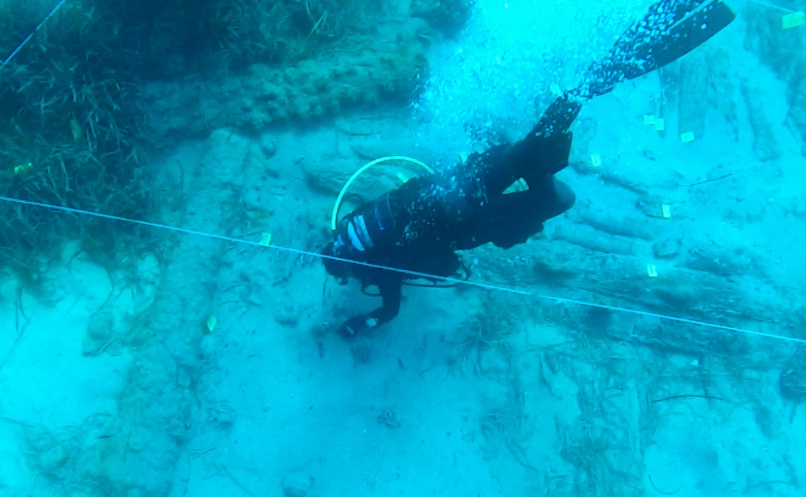
The excavation revealed a small part of the hull’s side, reportedly in a good state, and several moveable findings that were transferred to the Conservation Laboratory of the Department of Antiquities in Larnaka, where they are being treated. Among others, the findings include wooden rigging-elements, pistol bullets, ceramics, glass tableware and bricks, while a number of selected timbers was also lifted, the samples of which have already been sent for analysis and dendrochronology. Most importantly, an iron cannon, found in a small distance from the main shipwreck, was also lifted by the Maritime Archaeological Research Laboratory (MARELab) of the Archaeological Research Unit of the University of Cyprus, which is responsible for the excavation.
The excavation’s director is Dr. Stella Demesticha, in collaboration with the Department of Antiquities. The shipwreck, which probably dates to the late Ottoman period, is located 28 meters below sea level and it is the only shipwreck of this period known in the island, and one of the few that are under investigation in the entire eastern Mediterranean Sea. It was known among divers since the 80s, when diving activity started to develop in the area. However, the official report at the Department of Antiquities was made in 1992. Since then, several attempts have been made to survey the site, with no follow up: In 1994, a team from the Ephorate of Underwater Antiquities of Greece visited the site, while in 2004 a private company, Aquatec, in collaboration with the German Institution DEGUWA made attempts to survey and protect the site.
Gradually, during these years, knowledge of the site was widespread among the diving community. Due to its location, at a depth easily accessible to divers, and the area’s “friendly” waters, it was transformed into an uncontrolled recreation spot. This resulted in its destruction and looting, and the subsequent destruction of valuable archaeological evidence.
All the above, along with the fact that there was high percentage of preservation on the wooden hull, which remained exposed to the natural deterioration factors, was what led MARELab to launch a research program on the site, in collaboration with the Department of Antiquities of Cyprus. The Nissia Shipwreck Project aims to document and protect the site, lift selected parts of the hull, and implement new methods of in situ preservation.
See all the latest news from Greece and the world at Greekreporter.com. Contact our newsroom to report an update or send your story, photos and videos. Follow GR on Google News and subscribe here to our daily email!



